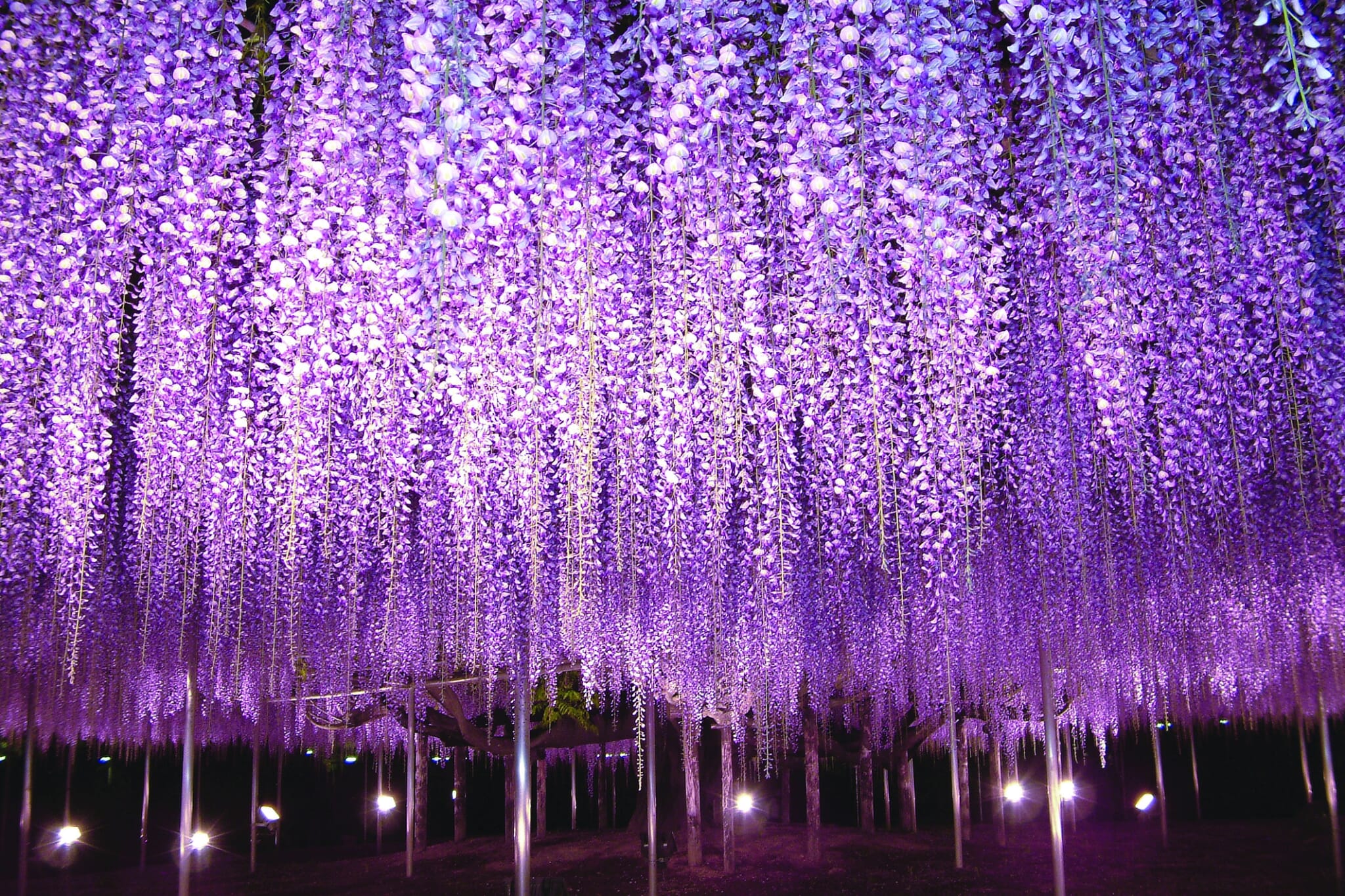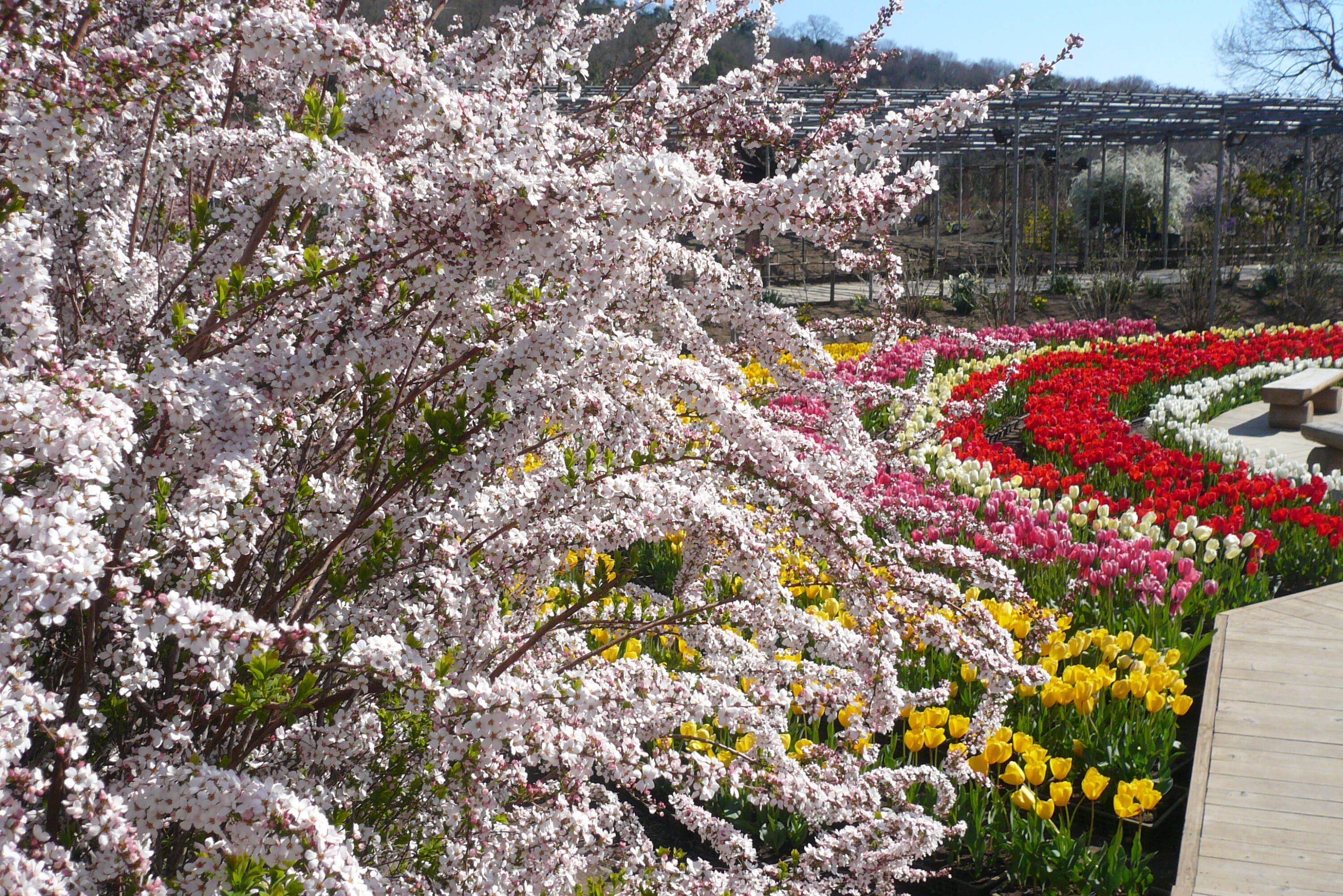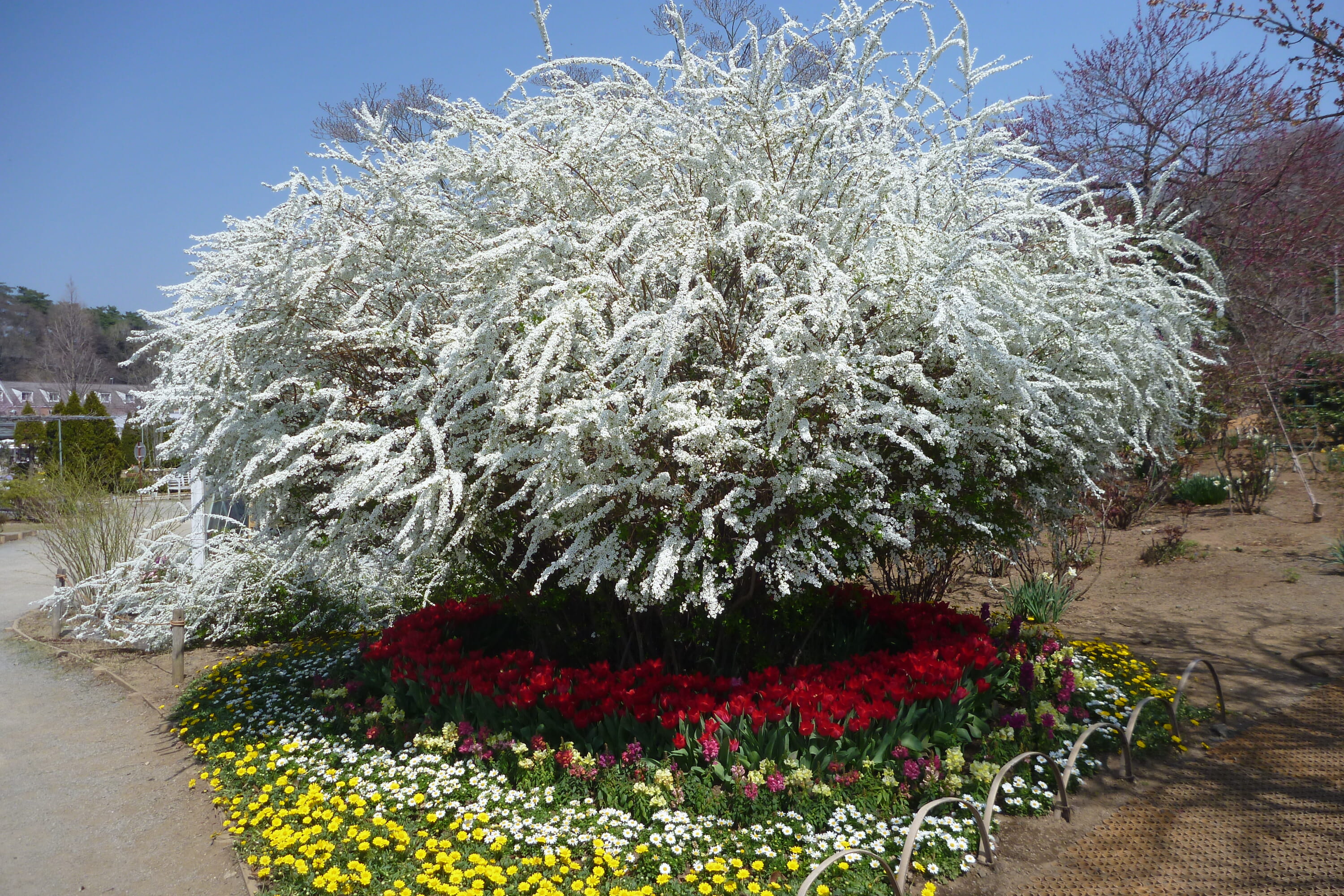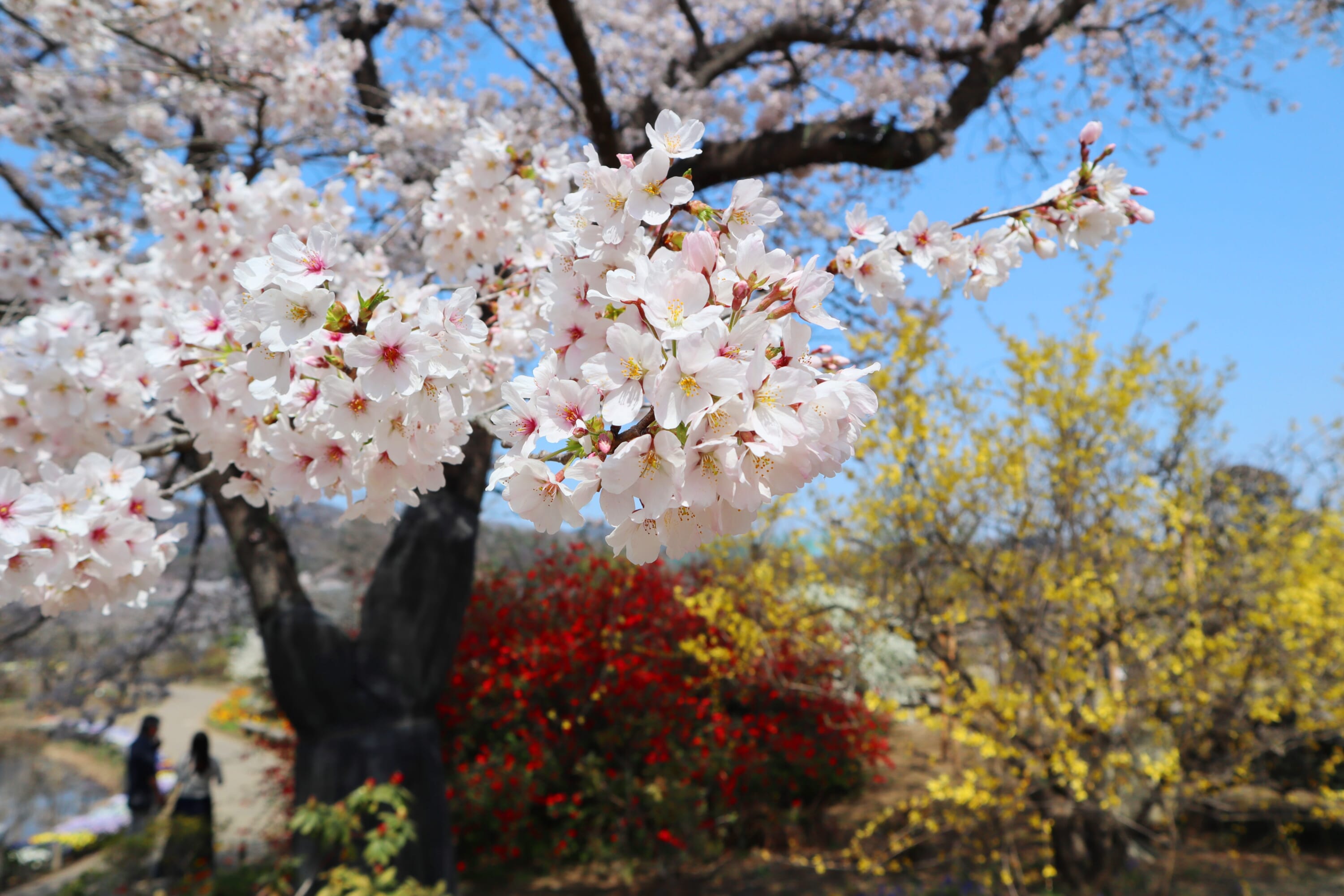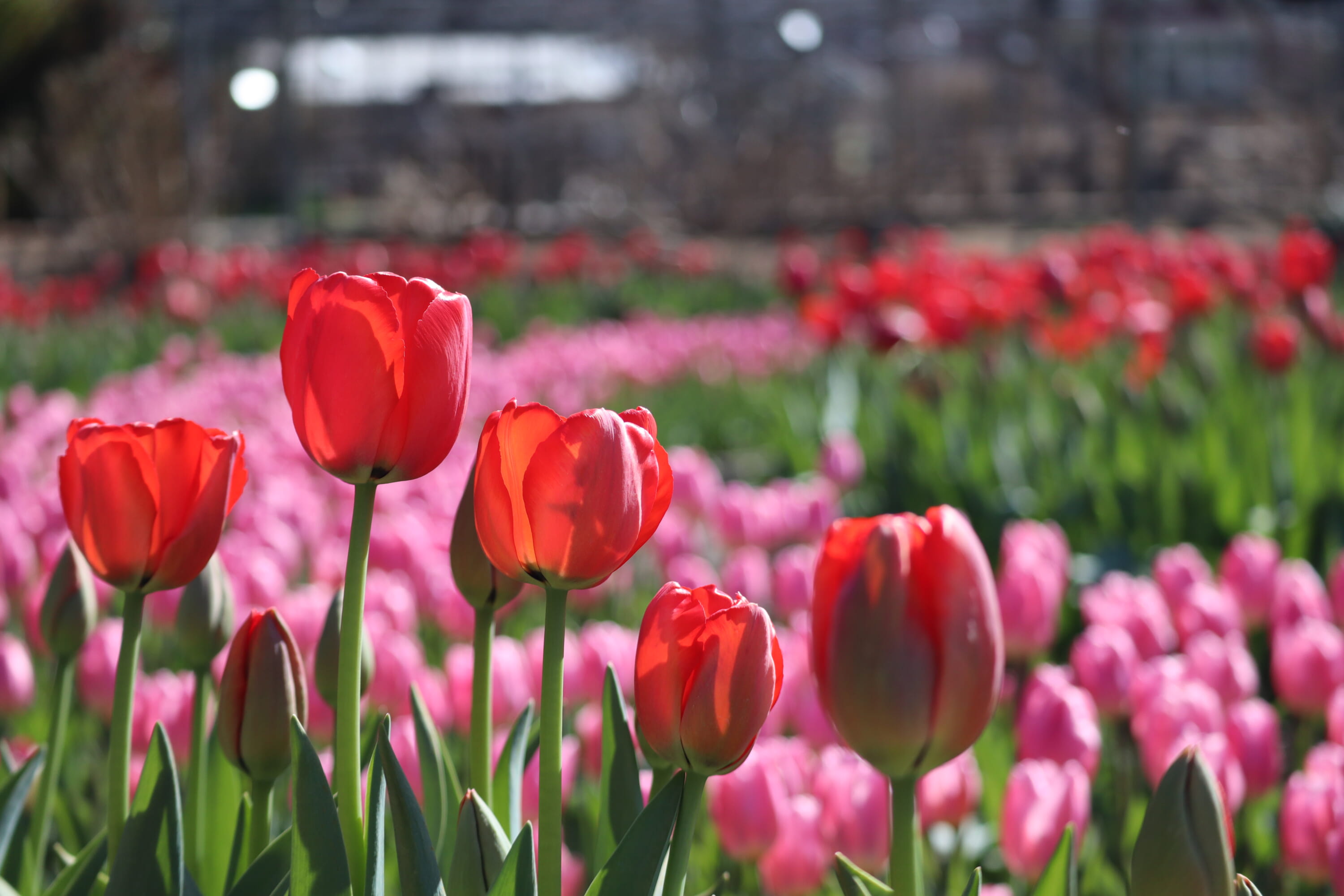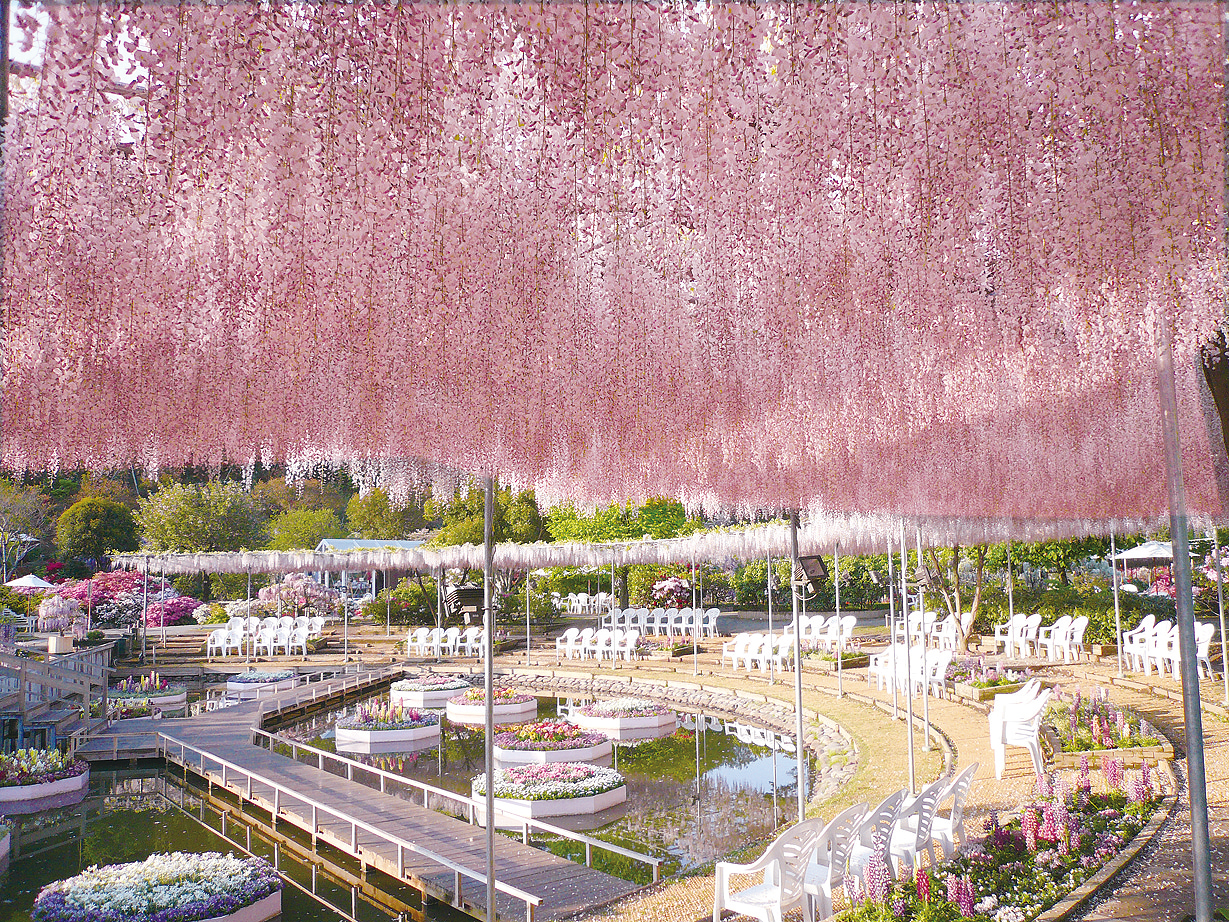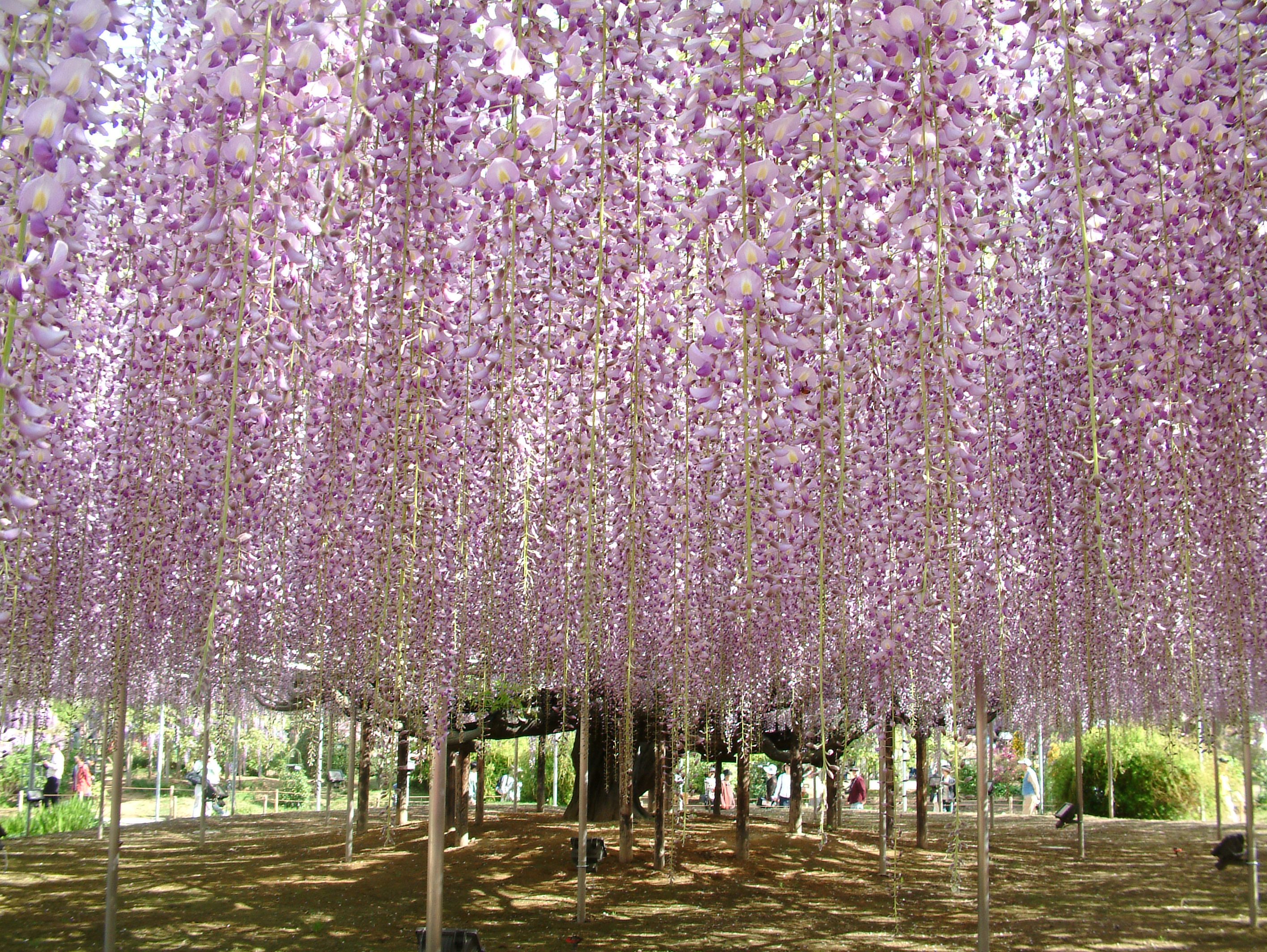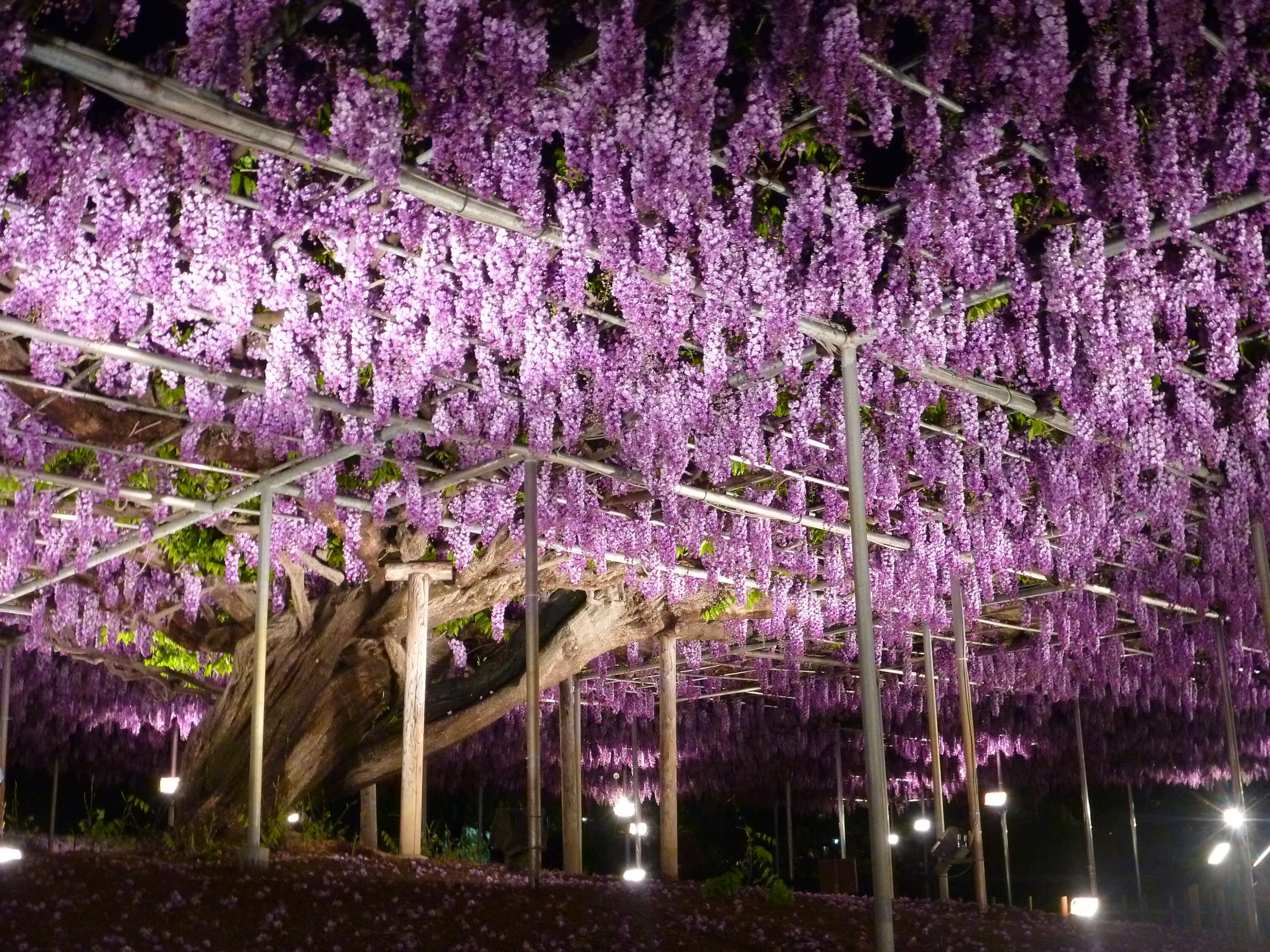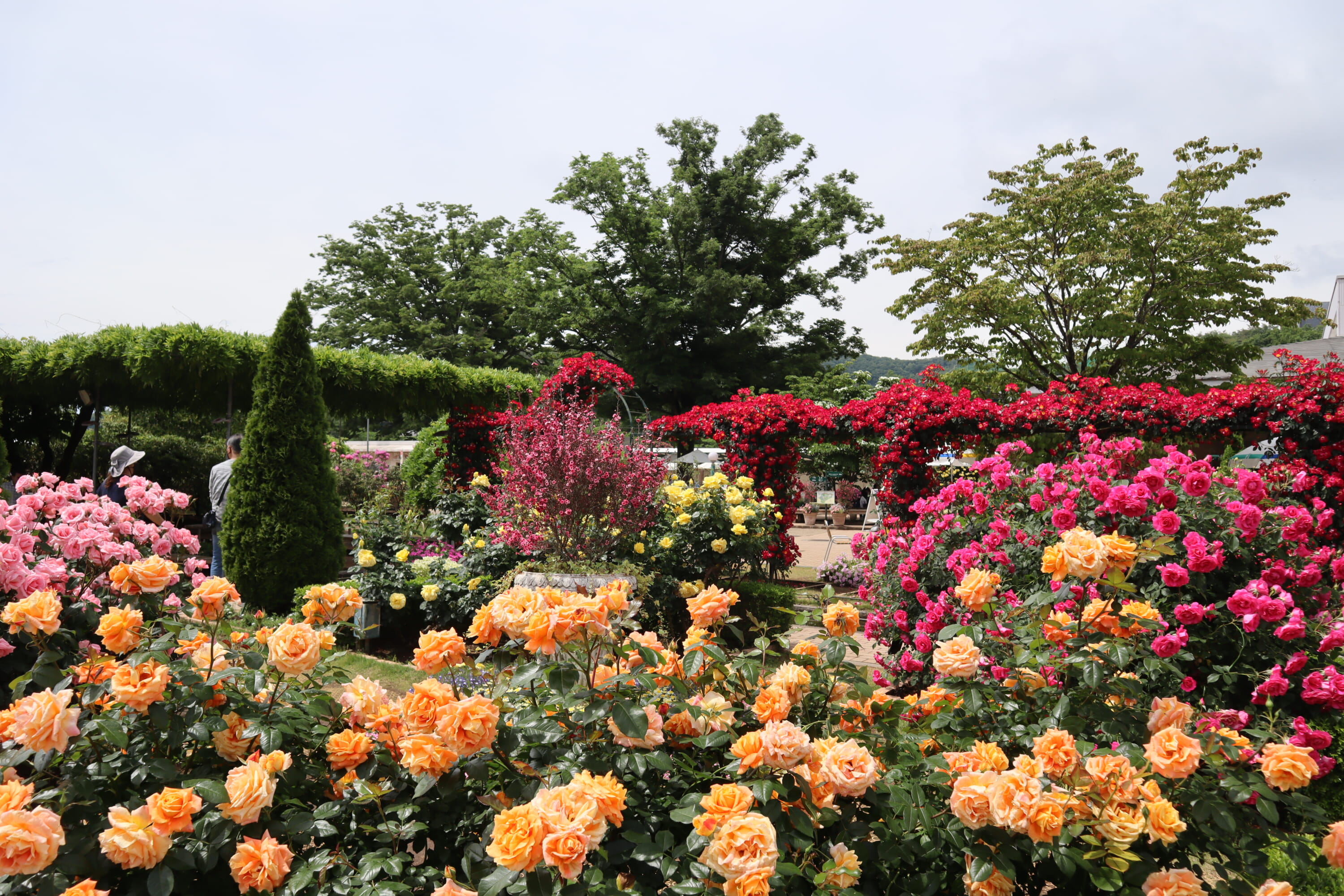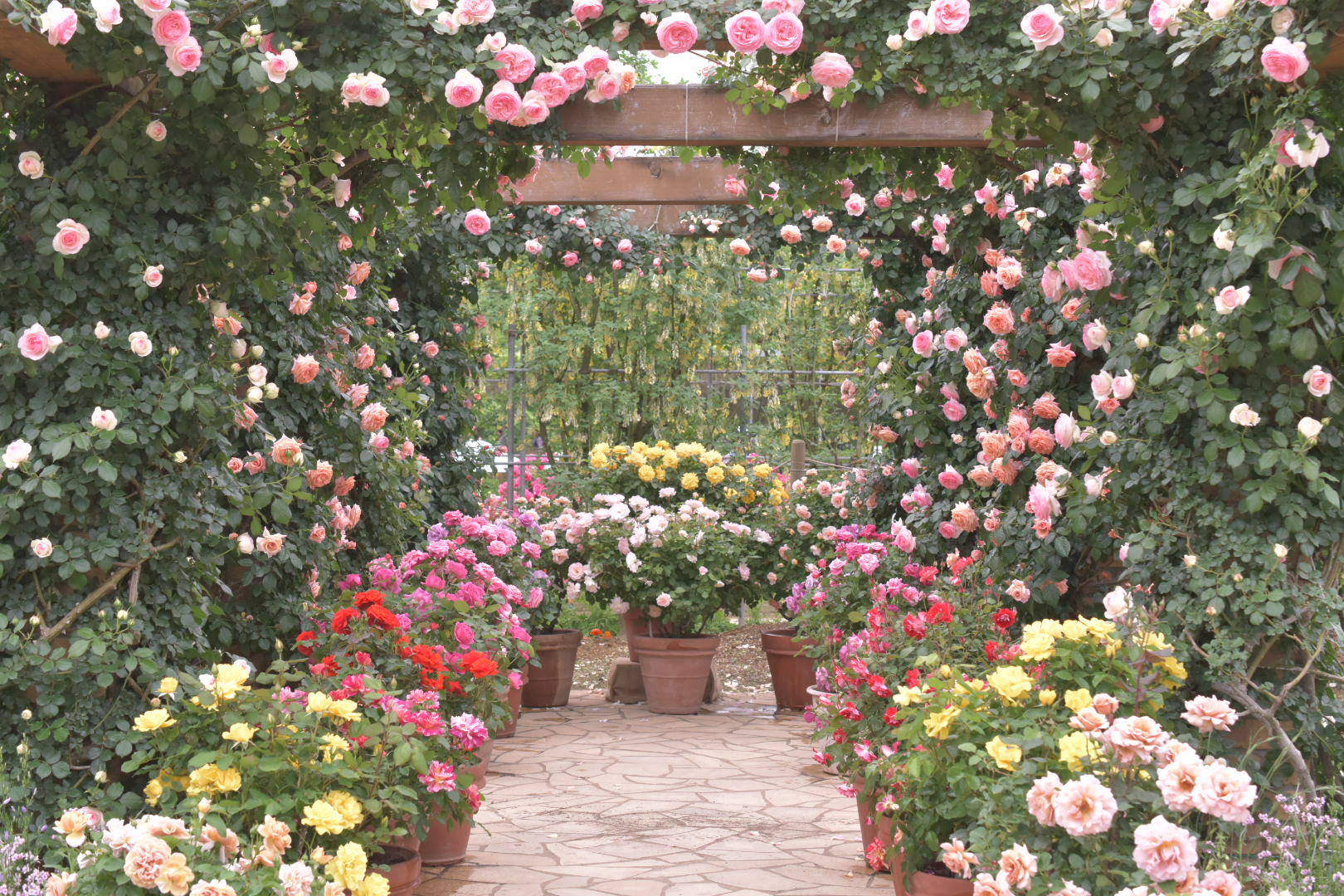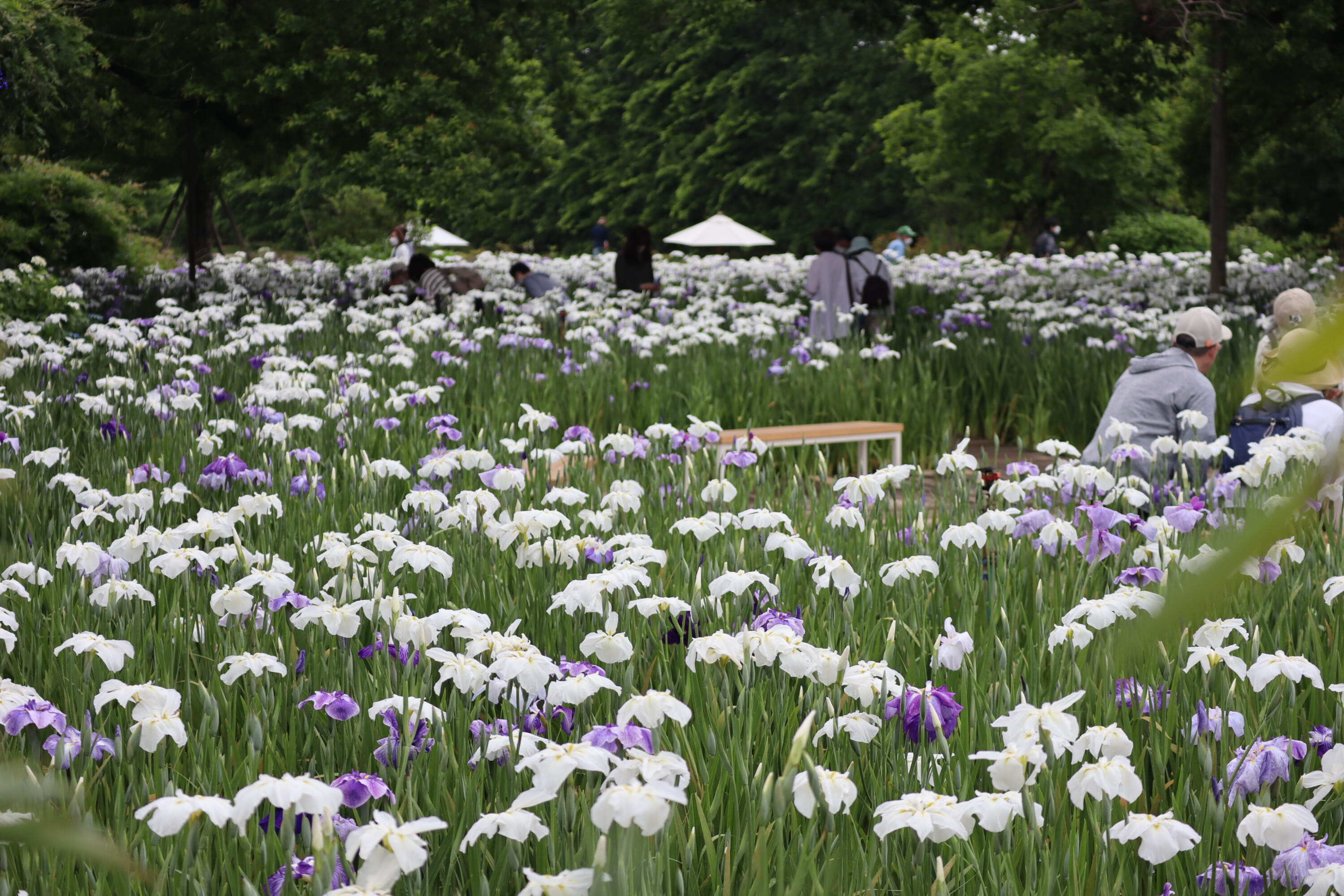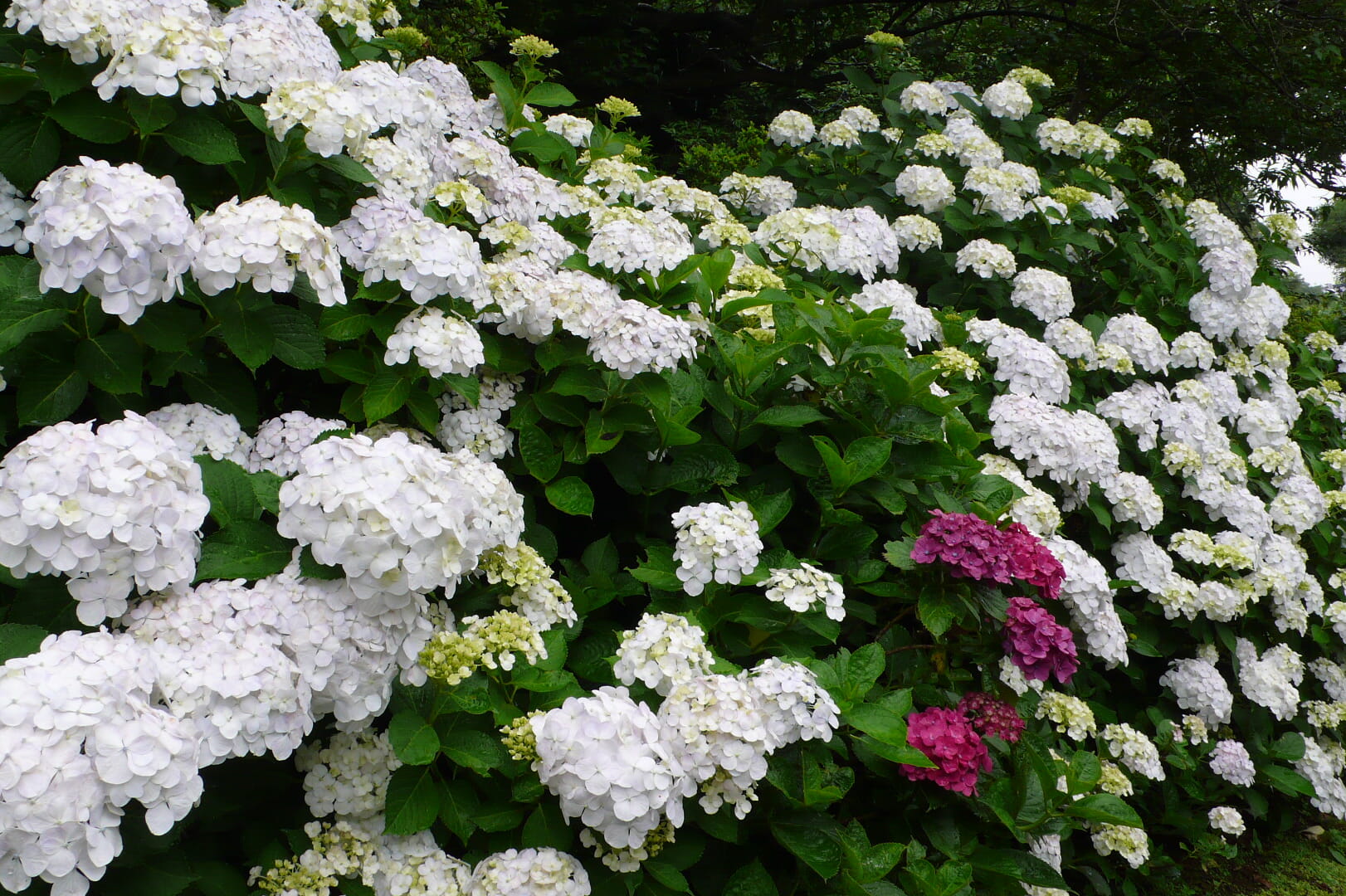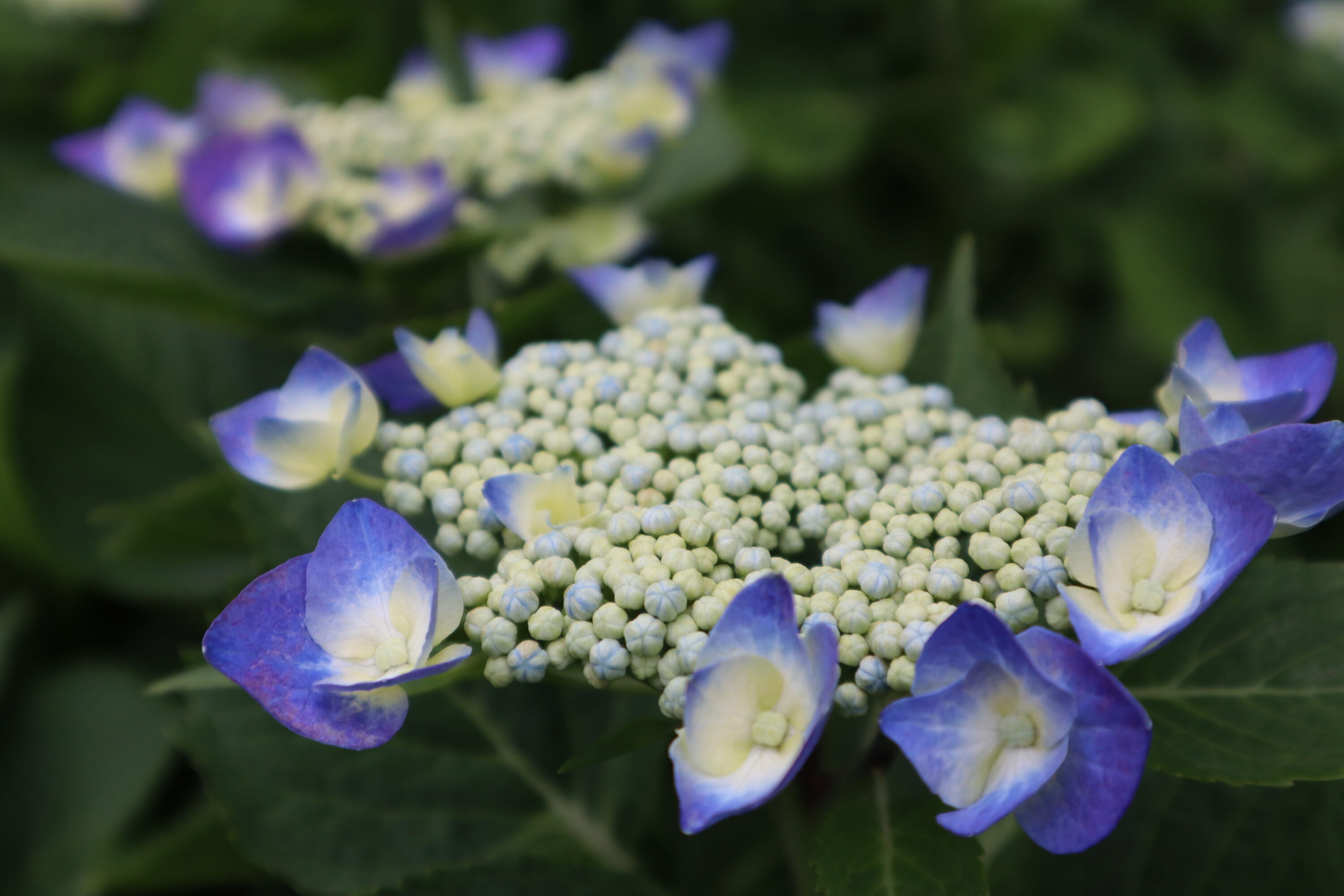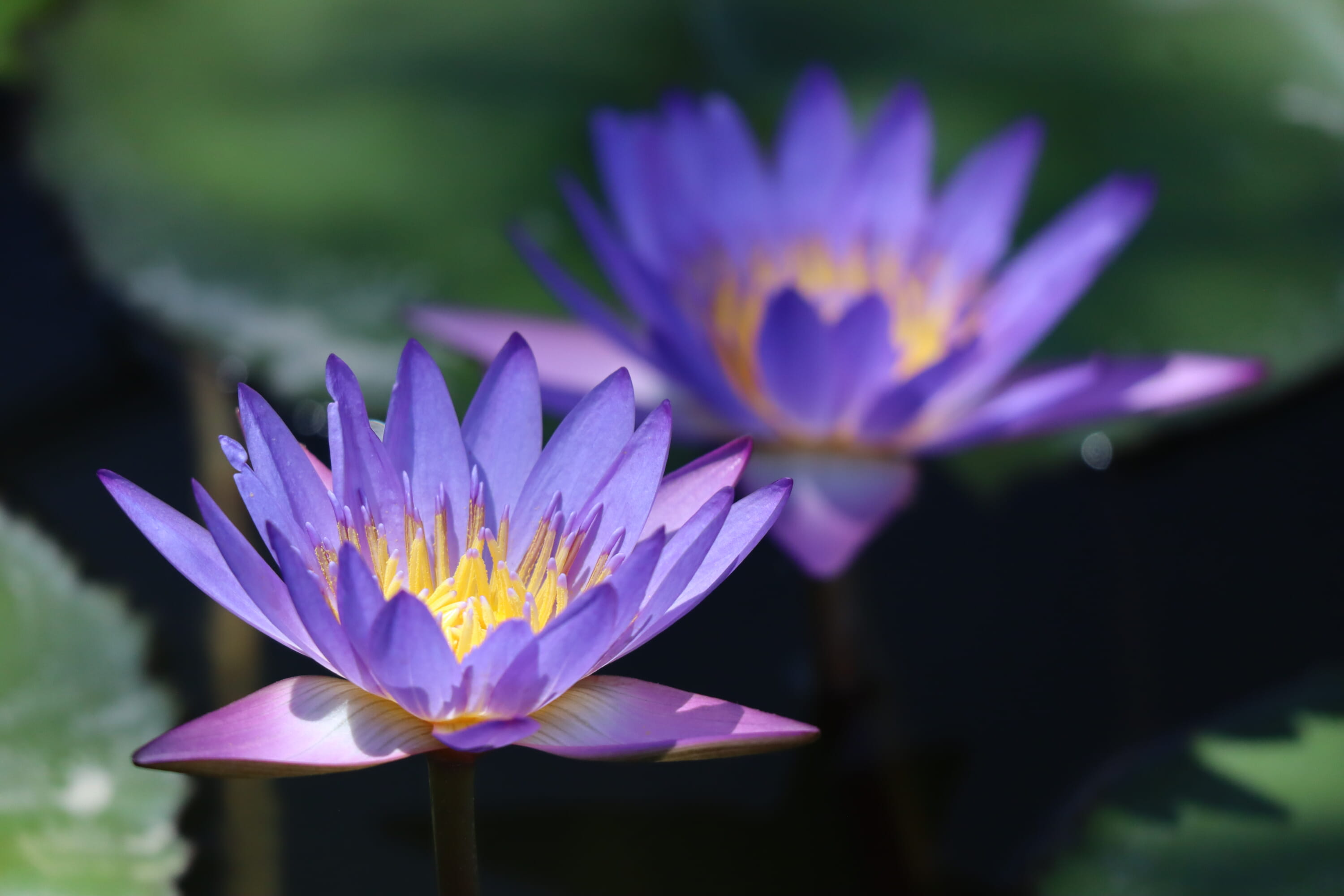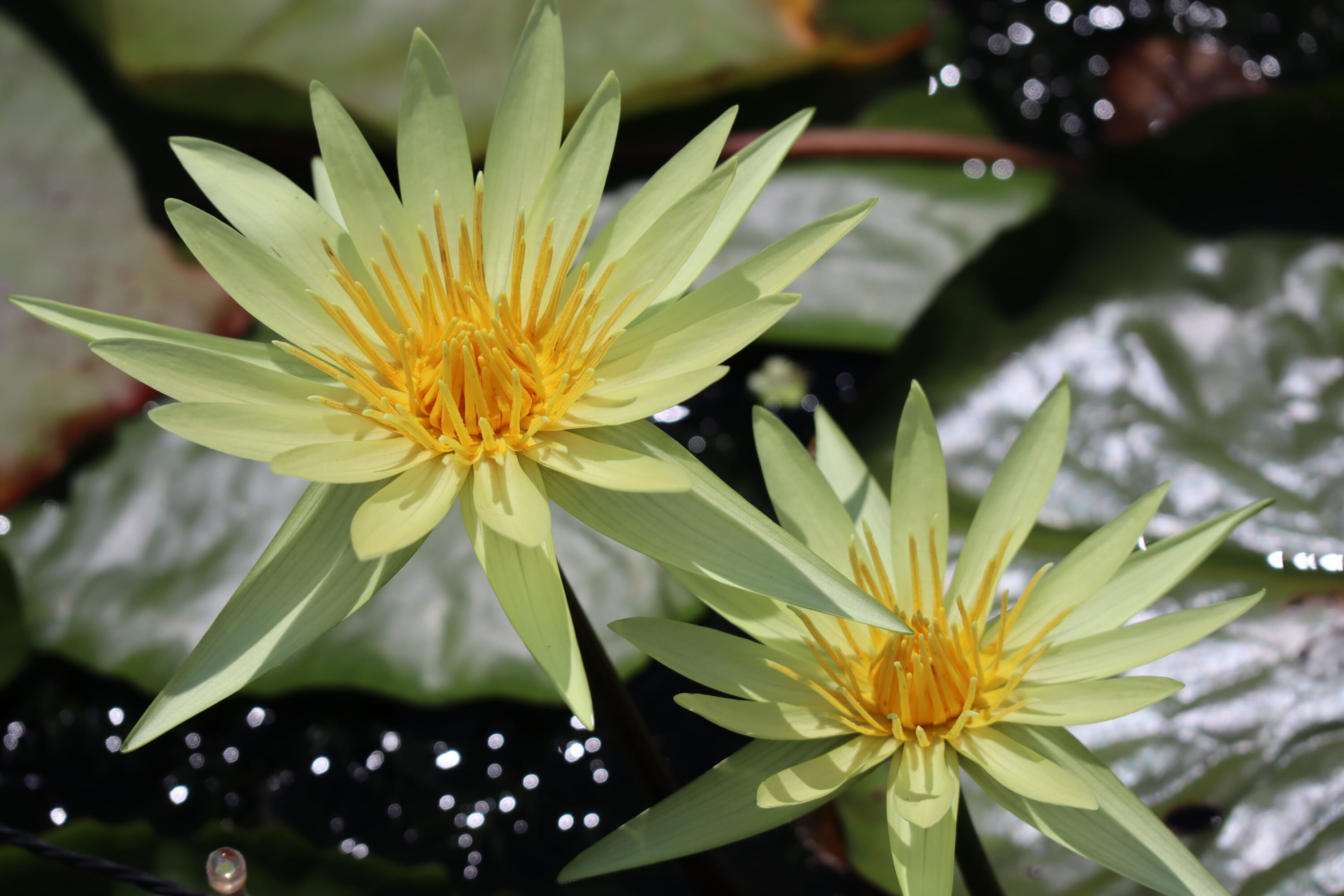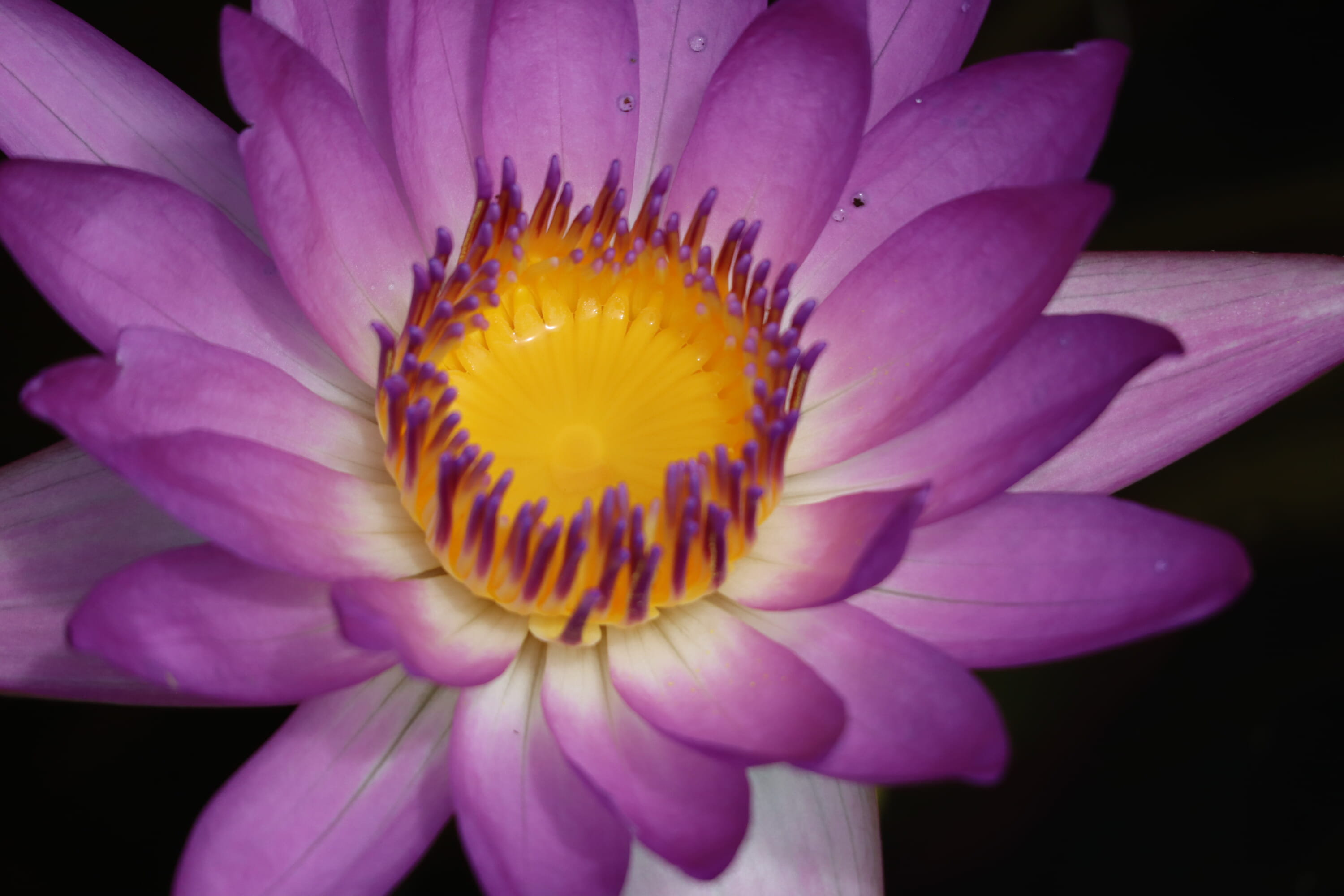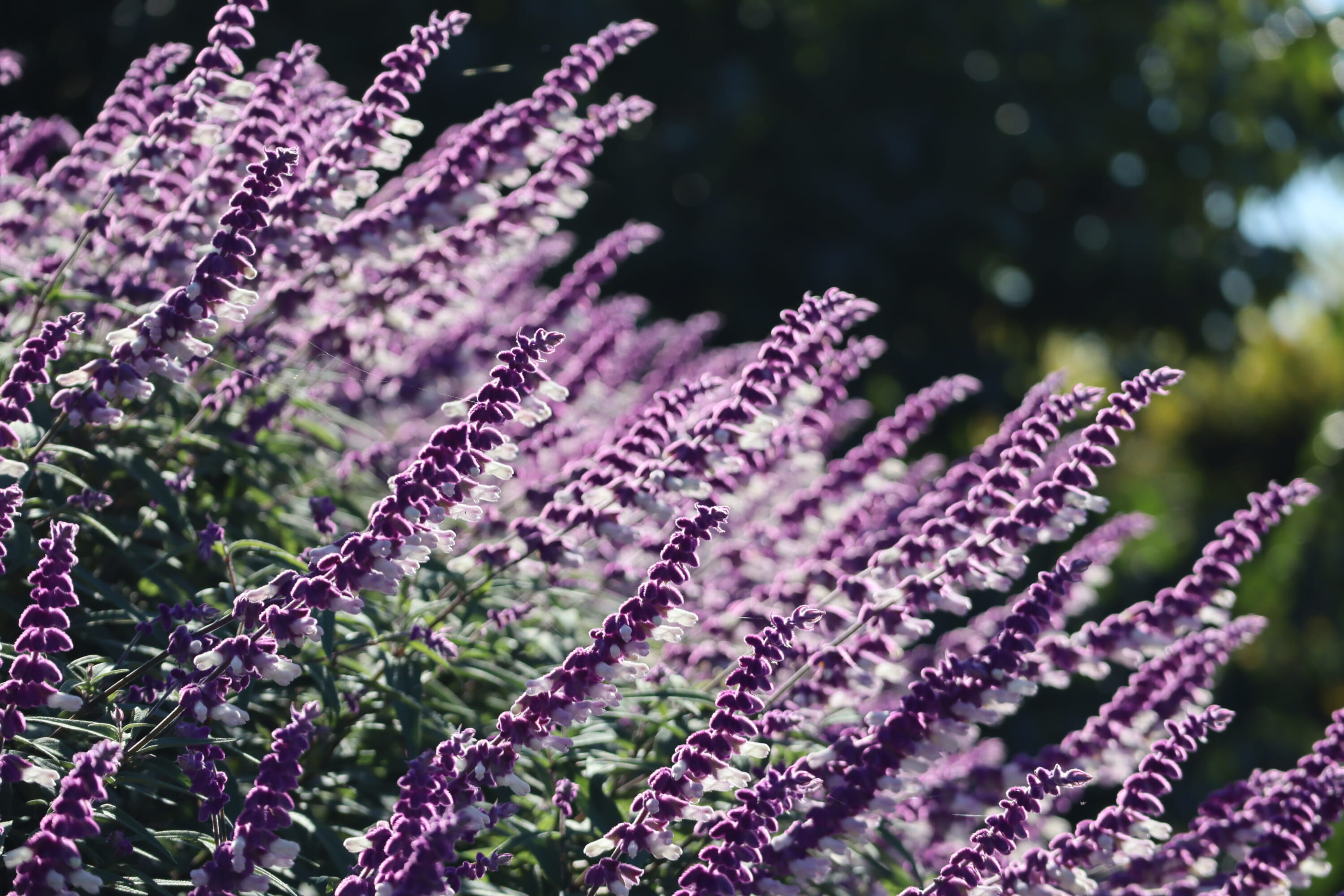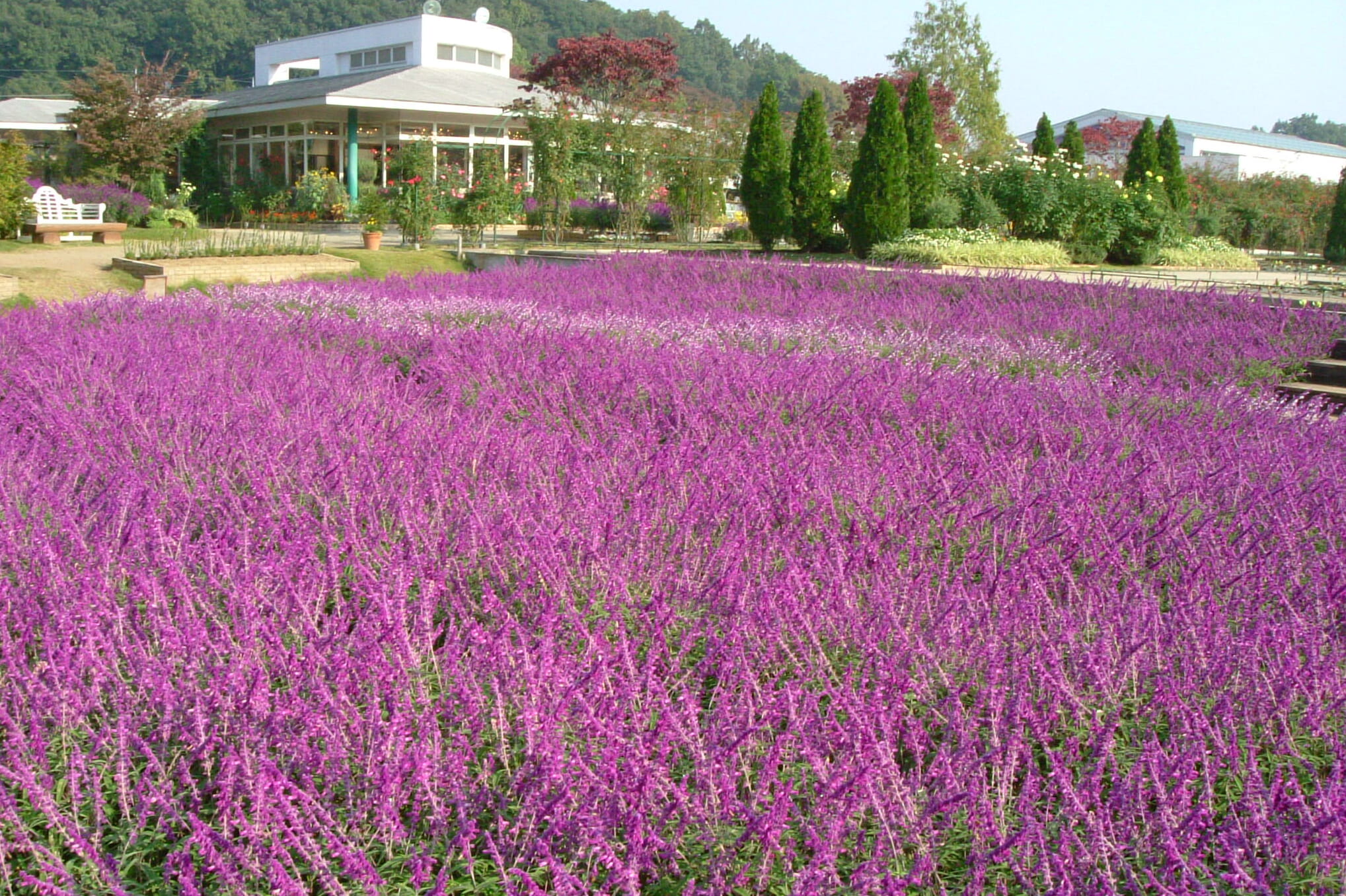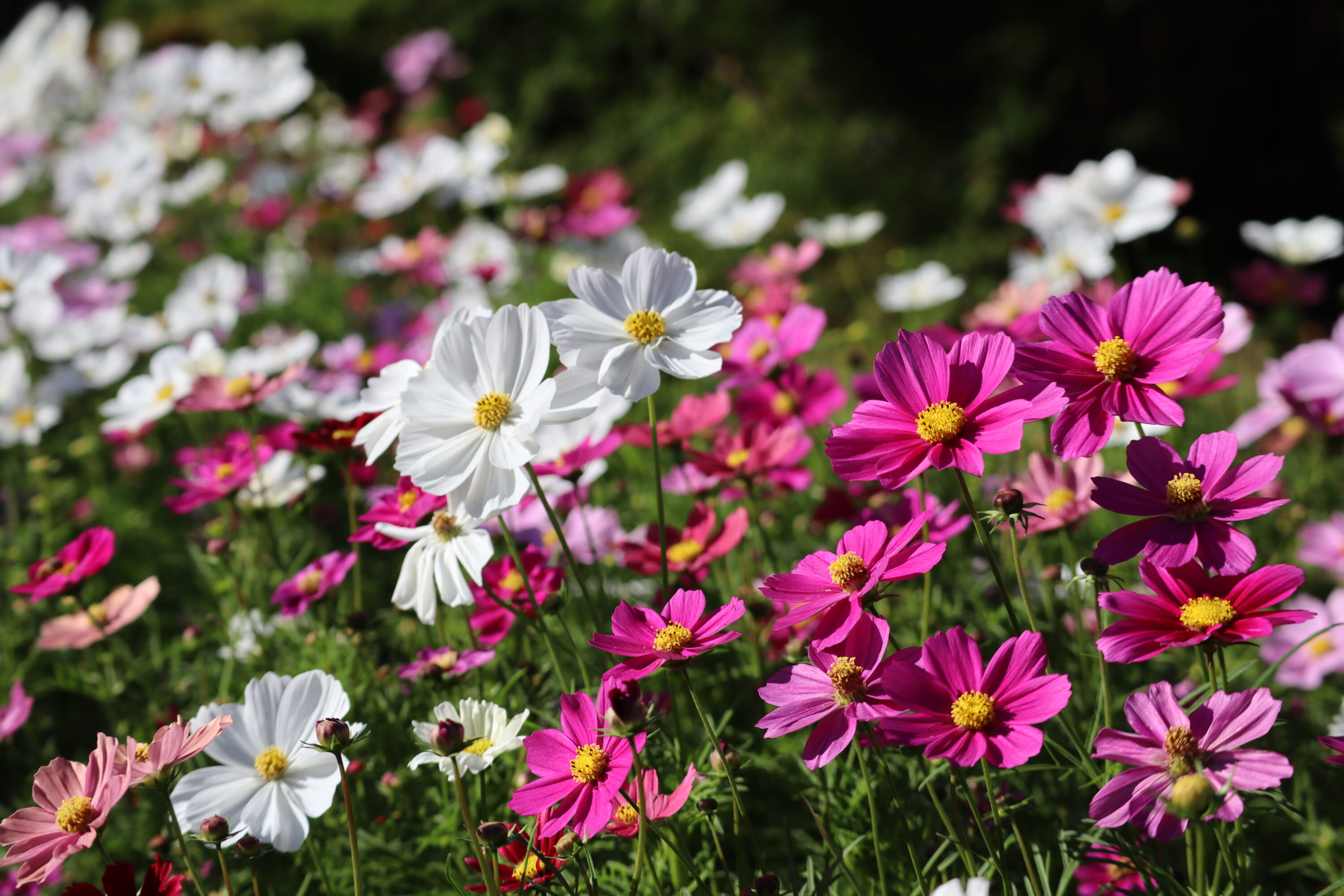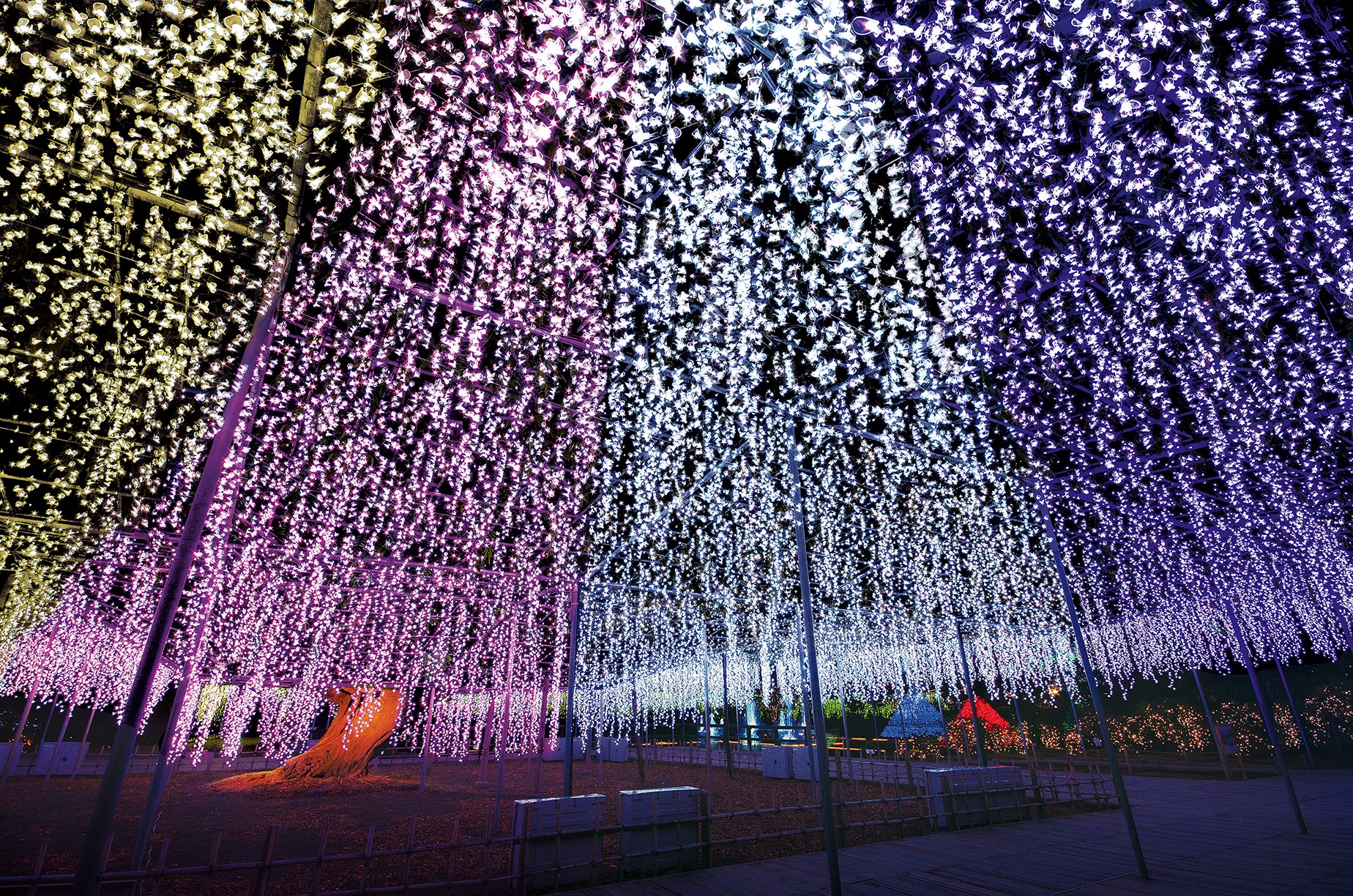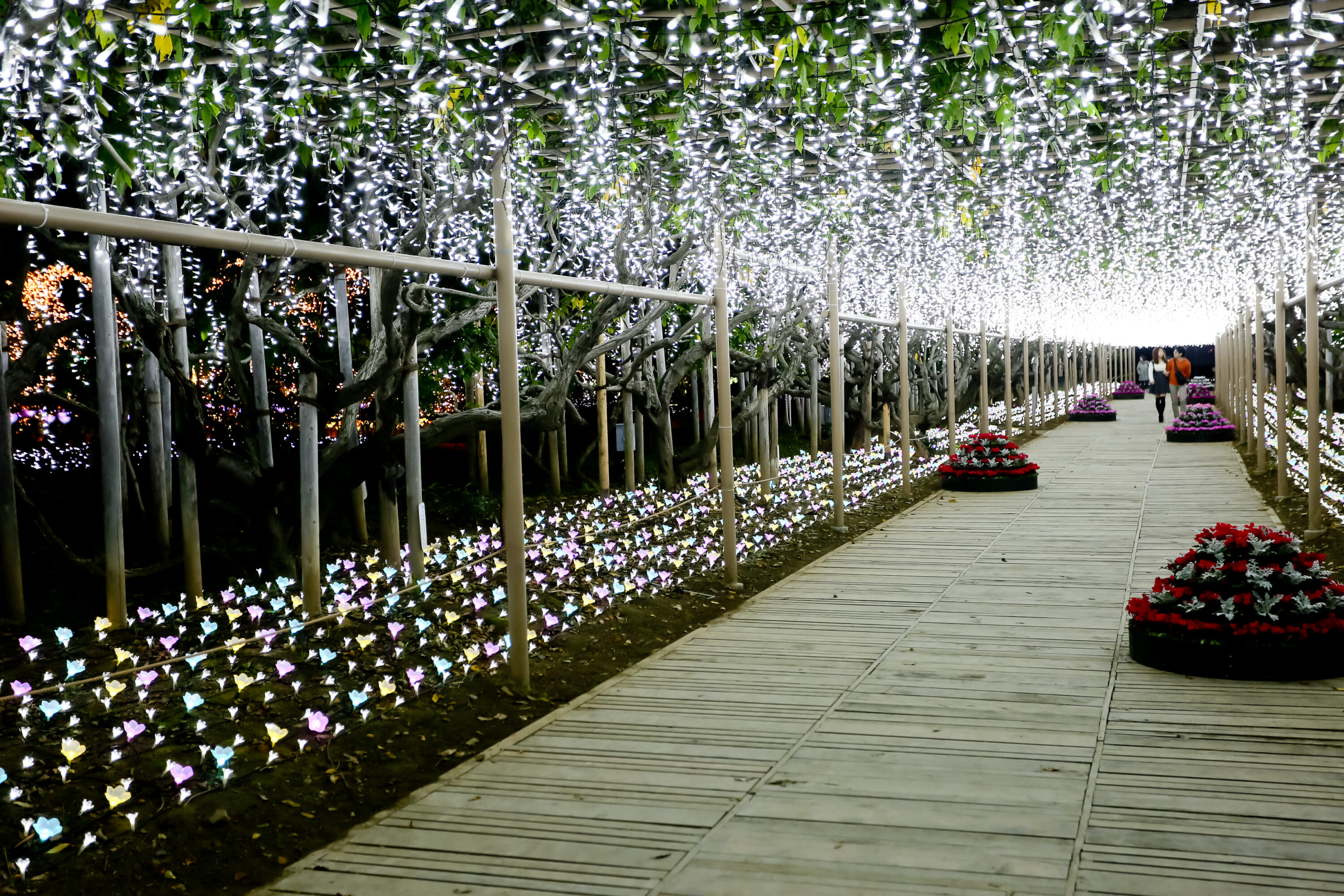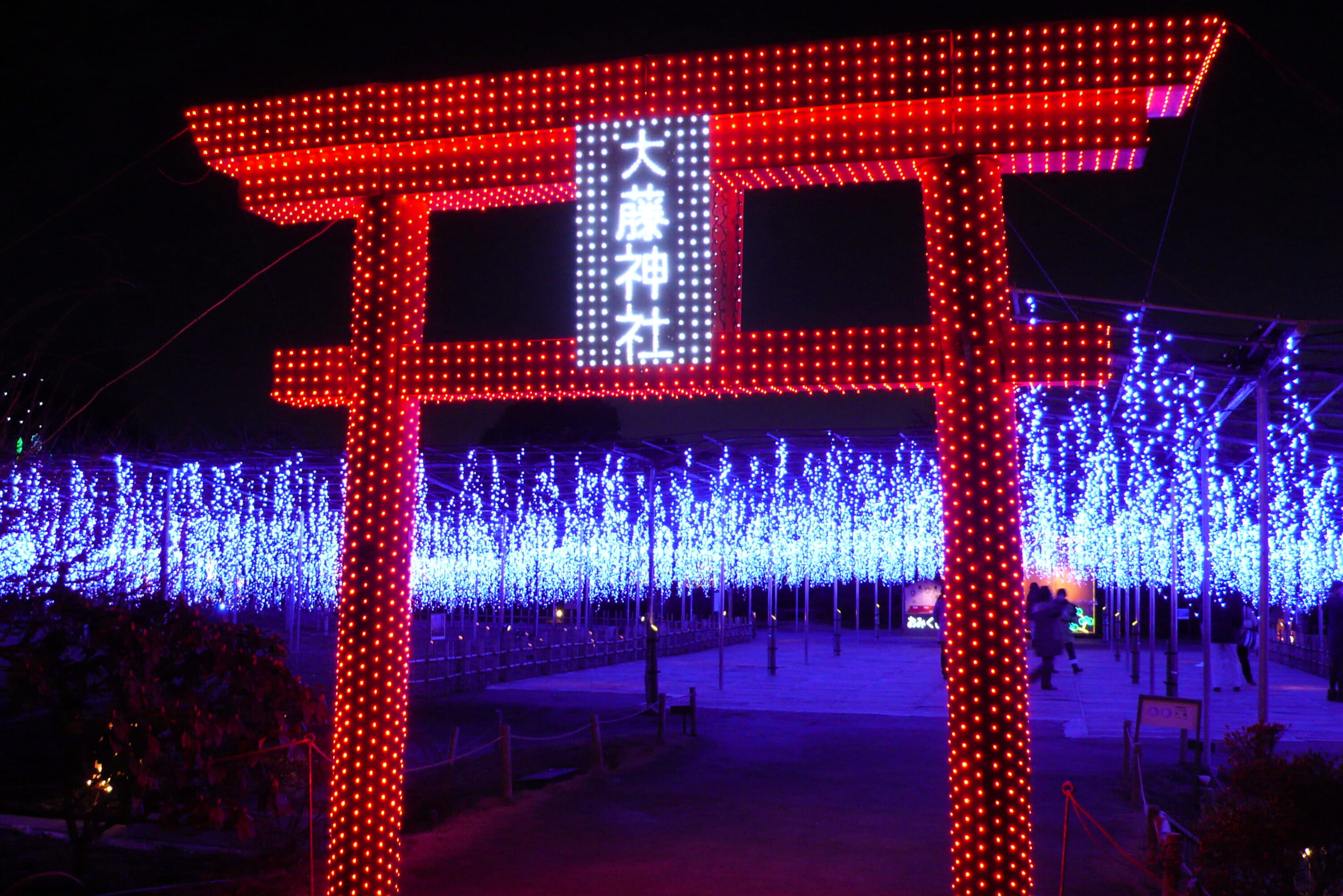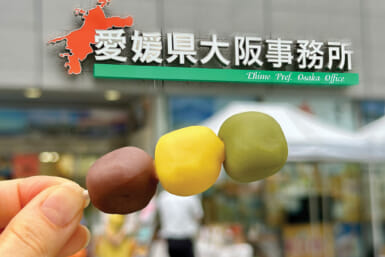Famous across the country for its great wisteria, Ashikaga Flower Park is not just mesmerizing in spring. It’s a paradise worth visiting year-round. Located in Tochigi Prefecture, about 100 kilometers north of Tokyo, it’s also an easy day trip from the capital. It’s just about an hour’s drive by car or two hours by Shinkansen. Officials at Ashikaga Flower Park suggest visitors generally spend two to three hours of their time touring inside the park, which encompasses approximately a 100,000-square-meter area.
The park’s annual schedule is divided into eight seasonal themes, dubbed “Eight Floral Seasons,” or “Eight Chapters,” which is the park’s preferred way to narrate its floral stories. There are several hundred flowering plants and trees displaying their differing hues and colors at every turn. We visited the park to learn more.
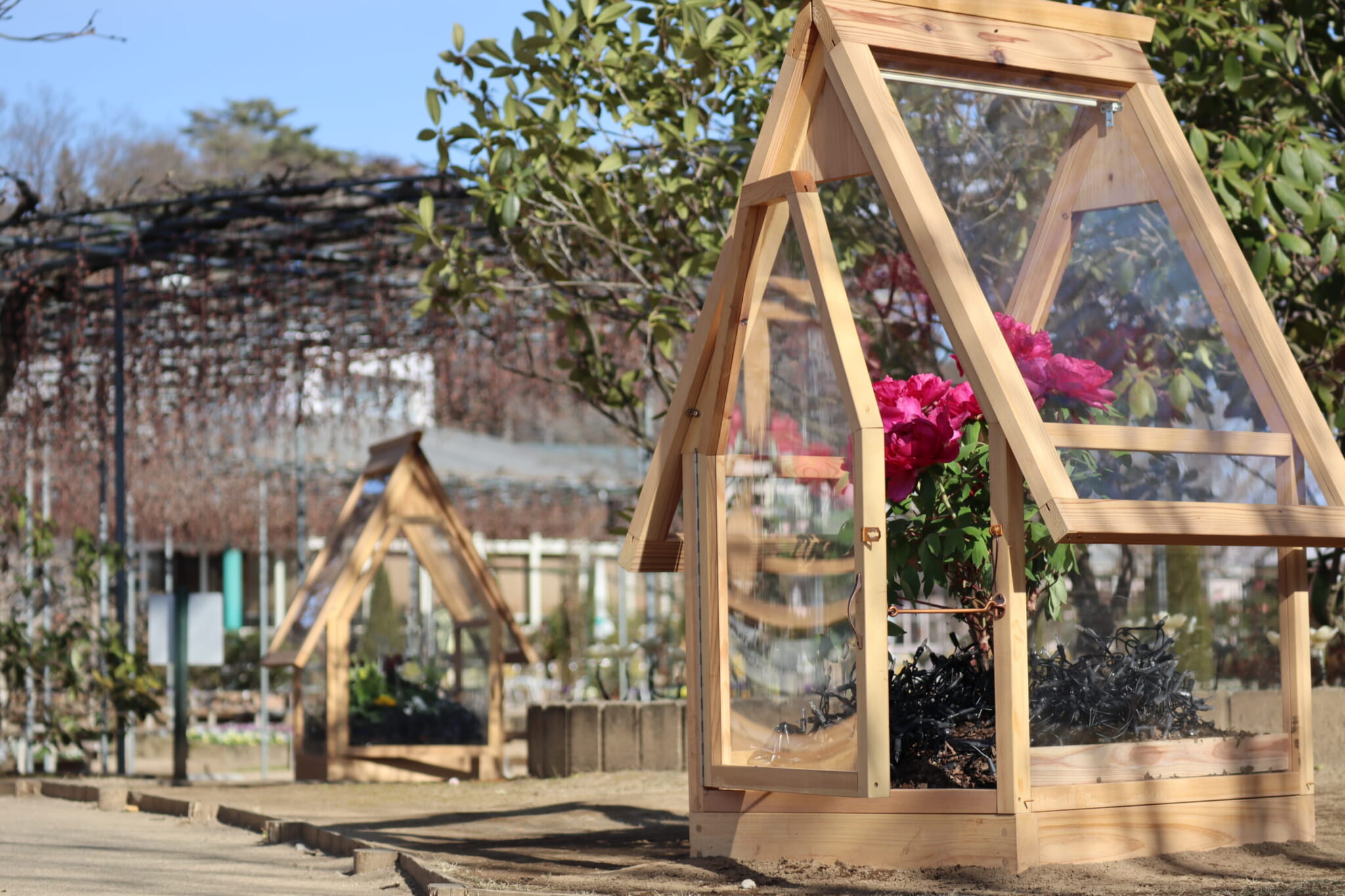
Winter-blooming peonies in Ashikaga Flower Park
Chapter 1: Heralding Spring (early January — late February)
Spring is really in the air even though it is still chilly. In January and February, there are winter-blooming peonies in 50 flower houses placed around the park. The Peony is known as the king of flowers in Japan, representing good fortune, nobility and bravery.
In this season, the park is additionally colored in red and yellow with the blooming of the kankobai (winter plum tree with reddish blossoms) and the wintersweet plant (also known as Japanese allspice) that blooms in yellow. These are some of the earlier bloomers thriving in the cold season.
Chapter 2: Spring Flower Festival (early March — mid-April)
Japan’s spring rainy season arrives around mid-March, as the drizzling spring rain pours over the trees and irrigates the plants beneath the ground for the flourishing of spring flowers.
As people in Japan often celebrate the coming of spring with cherry blossoms (which the park does offer in limited amounts), Ashikaga Flower Park is proud to embrace the season with 30 thousand colorful tulips that have an earlier blossoming time. Along with crocus, Thunberg’s meadowsweet and many others, the park then introduces you to its second chapter, the Spring Flower Festival.
Unquestionably, flower viewing in Japan isn’t complete without outdoor bento eating. To that end, the park offers an elegant kaiseki-like bento, which comes in limited seasonal editions to keep your taste buds busy while visitors view the flower buds.
Kokoro Makino, 22, who has been living in Tochigi for seven years, paid her fourth visit to the park this year. “This is actually my first time to eat in the park. The spring limited menu exceeded my expectations,” she said. “I especially recommend the wisteria-flavored ice cream to everyone.”
Chapter 3: The Wisteria Story (mid-April — mid-May)
One of the most celebrated chapters in Ashikaga Flower Park is its wisteria. Dubbed by many as the most beautiful wisteria in the world, the awe-inspiring views attract numerous visitors from around the world. The park subsequently earned itself coverage in National Geographic’s “certified photographic album.”
The wisterias attract people’s attention in four different colors. There’s the pale cherry pink wisteria, the 160-year-old ofuji wisteria tree in purple covering an area of 1,000 square meters, white wisteria making an 80-meter-long tunnel, and yellow wisteria (native in Europe, this type is the hardest to cultivate in Japan). All of these wisterias in Ashikaga Flower Park are designated Natural Monuments by Tochigi Prefecture. The wisterias are also illuminated at night, making the atmosphere even more magical.
Recently, the wisteria season at Ashikaga Flower Park has been attracting Demon Slayer anime fans. In the Demon Slayer lore, the wisteria flowers are used for making poisons that can incapacitate regular demons, so beautiful wisteria landscapes are akin to paradise. However, this is not an official collaboration and cosplay is prohibited in the park.
The ticket price during wisteria season at Ashikaga Flower Park typically shoots up to a high of about ¥2,100. The park adopts a varying ticket pricing system that ranges from the low of ¥500, which is common during winter and the daytime, to a high of ¥2,100.
Chapter 4: Rainbow Garden (mid-May — early June)
Rainbow Garden gets its name from the image of various colorful flowers bursting onto the scene all at once during this season. There are rhododendrons in white, red, pink, yellow, purple, magenta and orange; clematis in purple, blue, pink, white and red, as well as bicolored; and 500 kinds of roses in plentiful colors as well. With a total of 2,500 plants blossoming around the same time, they constitute the bright colors of the rainbow and many shades in between.
Chapter 5: Blue and White Garden (early June — early July)
The fifth chapter at Ashikaga Flower Park similarly owes its name to the colors born by the flowers. During this season, the park is overflowing with around 200,000 irises, 1,500 hydrangeas and the late-blooming clematis. Some visitors come to the park clad in kimono during this chapter to fully enjoy their moment surrounded by a sea of flowers.
Chapter 6: Water Nymphs (early July — late September)
In ancient Greek and Roman stories, Nymph is the spirit of nature in the form of a young woman who lives in rivers and woods. The park is then full of her lively spirit in the fall. Water nymphs, also called water lilies, are flowing in the water like fairies as the park enters chapter six. There are about 1,500 tropical water lilies that bloom during this season. Combining luxury and elegance, large white, yellow, peach, red, purple and blue flowers together constitute a wonderful view from the open pier pond.
During this time, the park organizes a summer fair called “Summer’s Botanical Garden,” which is especially fun for children, since it offers some treasure hunt games. Seasonal summer dishes such as eel, shaved ice and yakisoba are also sold from various stalls, combining tasty food with beautiful flowers and an overall wonderful summer atmosphere.
Chapter 7: Purple Garden (early October — late November)
From early October to late November, the park goes into its seventh chapter, called the Purple Garden. Flowers such as Mexican bush sage and pansies paint the park in purple, decorating it like a royal palace. During the Edo period (1603-1868), when the Tokugawa Shogun was ruling, the mallow flower was the emblem, so the purple color was associated with nobility, spirituality and wisdom. It is considered a royal color to this day.
Chapter 8: Bejeweled Flower Garden (late October — late January)
The beginning of the temperature drop in October in Japan also symbolizes the start of Ashikaga Flower Park’s winter festival illumination show. A sea of illuminated color-changing flowers dancing to the rhythm of the music will surely keep you warm in the chilly weather. While the blossoming of wisteria in spring is a must-see, you also don’t want to miss the wisteria created with lights glowing during the winter light show.
Related Posts
- 5 Stunning Tokyo Flower Festivals Happening in May
- Flower Artist Makoto Azuma Sends His Bouquets Into the Stratosphere
- List of 7: Recommended Japanese Flower Parks This Spring
This article is a collaboration between TW and Akita International University, Global Communication Practices (graduate school).

